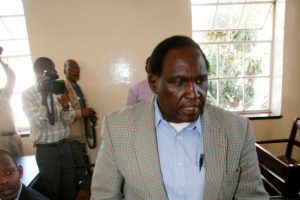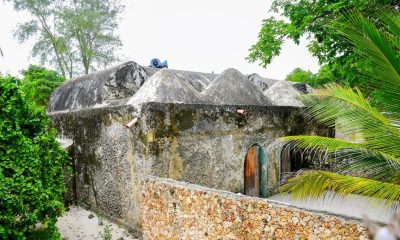Investigations
The Mess Of Former Lands Boss Gachanja As EACC Recovers Sh2.8 Billion Public Land Grabbed By JJ Kamotho
Between 1987 and 1995, the period when this particular fraud was perpetrated, Kenya witnessed systematic plunder of public land on a scale that staggers the imagination.
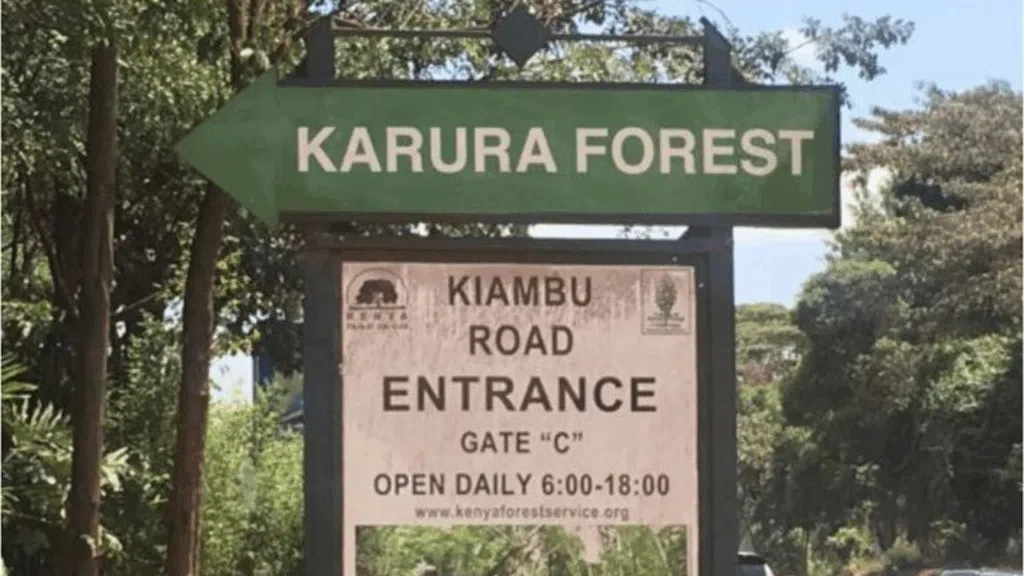
Nairobi, Kenya — In a stunning vindication of Kenya’s fight against historical land grabs, the Ethics and Anti-Corruption Commission has reclaimed a massive 7.11-hectare chunk of Karura Forest worth a staggering Sh2.8 billion, bringing to light the brazen corruption that saw the late political heavyweight John Joseph Kamotho and his cronies carve up protected public land like a personal fiefdom.
The landmark judgment delivered by Justice David Mwangi at the Environment and Land Court on October 23 has not only exposed the audacity of land grabbers during Kenya’s dark days of political impunity but has also thrust former Commissioner of Lands Wilson Gacanja into the spotlight as a key enabler of one of the most egregious cases of public land theft in the country’s history.
For 18 years, EACC and its predecessor, the Kenya Anti-Corruption Commission, battled through the courts to unravel a complex web of fraudulent transactions that saw prime public land, including gazetted forest and institutional property reserved for Kenya Teachers Training College, end up in private hands through a series of illegal maneuvers that would make even the most hardened land grabbers blush.
At the heart of this scandal lies the story of how Kamotho, the once-powerful Kanu secretary-general who wielded immense influence during President Daniel arap Moi’s reign, orchestrated an elaborate land heist that began in the early 1990s.
Working with compliant land officials, Kamotho first secured Nairobi Block 91/130, a modest 0.566-hectare parcel originally reserved for KTTC. But that wasn’t enough. An additional 2.5 hectares was then illegally hived off from Karura Forest and amalgamated with the KTTC land to create Nairobi Block 91/333, which was promptly registered under Gigiri Court Limited, a company associated with the former minister.
The audacity didn’t stop there.
Kamotho proceeded to sell the company and its ill-gotten land to Mandip Singh Amrit and Manjit Singh Amrit for a paltry six million shillings, a fraction of what the property was worth even then.
The new owners, emboldened by the apparent ease with which public land could be grabbed, commissioned a private survey that magically expanded their holdings by another 3.8 hectares, again carved out from the protected Karura Forest.
This is where Wilson Gacanja enters the picture as the willing accomplice who gave official blessing to grand theft.
On September 6, 1995, Gacanja, as Commissioner of Lands, issued a lease for the expanded property, now designated Nairobi Block 91/386, for residential use.
Never mind that the land was part of a gazetted forest and institutional reserve.
Never mind that no degazettement had been done.
Never mind that the Forest Act and Government Lands Act explicitly prohibited such transactions.
Justice Mwangi’s judgment pulled no punches in condemning the actions of Gacanja and his predecessor James Raymond Njenga, declaring that both former Commissioners of Lands bore personal responsibility for the illegal allocation of public land.
The court found their actions to be not just irregular but manifestly illegal and beyond the powers of their offices, a damning indictment that should send shivers down the spines of current and former public officials who have treated public land as their personal property.
The ruling reaffirmed a critical constitutional principle enshrined in Article 40(6): that the right to property does not extend to assets acquired unlawfully.
In other words, no amount of paperwork, no Certificate of Lease, no registration can legitimize land that was stolen from the public in the first place.
The principle of first registration, often wielded as a shield by land grabbers, offers no protection when the acquisition itself was fraudulent.
Speaking at Karura Forest after touring the recovered property with Kenya Forest Service officials, EACC Chief Executive Officer Abdi Mohamud hailed the judgment as a major victory for the protection of public land.
His words carried the weight of an 18-year legal battle that many had written off as unwinnable against the powerful interests arrayed against the commission.
“This judgment marks a major victory for the protection of public land. The recovered parcel, reserved partly as forest land and partly as institutional land, now reverts to the public and remains public property,” Mohamud declared, his satisfaction barely concealed.
The Karura case resonates deeply with Kenyans who remember the forest’s near-destruction in the 1990s and early 2000s when politically connected individuals and developers descended on it like vultures.
It took the courage of environmental activists, led by the late Nobel laureate Wangari Maathai, to save Karura from complete destruction.
The forest has since become a national symbol of conservation and civic activism, making this recovery all the more significant.
Beatrice Mbula, Deputy Chief Conservator of Forest at KFS, couldn’t hide her relief at the judgment, noting that it would help the service combat the persistent challenge of land grabbing and forest encroachment.
“Forests are very important as our water catchment areas as well as biodiversity conservation,” she said, stating what should be obvious to anyone with a modicum of environmental awareness.
But this case is not just about one parcel of land or one forest.
It represents a broader pattern of impunity that characterized Kenya’s land management during the Moi era and beyond.
Between 1987 and 1995, the period when this particular fraud was perpetrated, Kenya witnessed systematic plunder of public land on a scale that staggers the imagination.
Protected forests, road reserves, school land, railway land, all were fair game for the politically connected and their allies in the civil service.
What makes this judgment particularly significant is that it demonstrates that no matter how long it takes, no matter how powerful the individuals involved, stolen public land can be recovered.
Eighteen years is a long time to wait for justice, but the EACC’s persistence has paid off, sending a clear message that land grabbers cannot rest easy, no matter how many documents they have or how long ago their crimes were committed.
The commission’s recent track record speaks to this renewed vigor.
In the past year alone, EACC has filed more than 80 recovery suits targeting properties valued at approximately Sh4.8 billion.
Among the notable successes are the recovery of a Sh30 million road reserve in Nyali, Mombasa, a Sh35 million parcel near the Bungoma State Lodge, and six prime properties worth Sh75.4 million from former Migori Governor Okoth Obado and former Nairobi County Treasury head Stephen Osiro. Additionally, Sh50 million worth of public land within the Kenya Railways Light House at Kizingo Estate in Mombasa has been reclaimed.
These recoveries represent more than just monetary value. They represent a fundamental shift in how Kenya deals with historical injustices around land ownership.
For too long, land grabbers operated with impunity, secure in the knowledge that their connections would protect them and that the sheer passage of time would legitimize their theft. This judgment shatters that illusion.
The fact that Wilson Gacanja and James Raymond Njenga have been found personally liable for their roles in this scandal raises important questions about accountability for public officials who abuse their offices.
While Kamotho is long dead, having passed away in December 2014, the officials who enabled his land grab are very much alive and must face the consequences of their actions.
As the property reverts to public ownership, with new lease titles to be issued to KTTC and Karura Forest, Kenyans can take solace in the knowledge that at least one piece of their stolen heritage has been returned.
But thousands of other parcels remain in the hands of land grabbers, protected by forged documents and political patronage.
The EACC’s message is clear: they’re coming for all of it, no matter how long it takes. As Mohamud put it bluntly, “We want to reassure the public that not only forests but all public land that is stolen or illegally stolen from individuals will be recovered. It does not matter how long it takes.”
For Wilson Gacanja and others like him who wielded their power to dispossess the public of their land, the judgment serves as a stark reminder that history has a long memory and justice, though delayed, eventually arrives.
The mess they created is now being cleaned up, parcel by parcel, and their names will forever be associated with one of Kenya’s darkest chapters of corruption and impunity.
Kenya Insights allows guest blogging, if you want to be published on Kenya’s most authoritative and accurate blog, have an expose, news TIPS, story angles, human interest stories, drop us an email on [email protected] or via Telegram
-

 Investigations2 weeks ago
Investigations2 weeks agoMoney Bior, Lawyer Stephen Ndeda Among 18 Accused Of Running An International Fraud Ring Involved With Scamming American Investor Sh500 Million
-

 Investigations2 weeks ago
Investigations2 weeks agoNestlé Accused of Risking Babies’ Health in Africa with ‘Toxic’ Cerelac Product Sold Highest in Kenya
-

 Investigations1 week ago
Investigations1 week agoHow Land Grabbing Cartels Have Captured Ardhi House
-

 News2 weeks ago
News2 weeks ago48-Year-Old Woman Who Pushed 25-Year-Old Boyfriend To Death From 14th Floor Kilimani Apartment Arrested
-

 Investigations2 weeks ago
Investigations2 weeks agoKDC Rocked With Fresh Sh500 Million Tender Scam
-
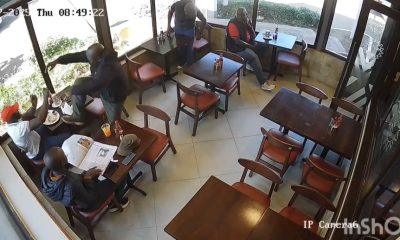
 Grapevine2 weeks ago
Grapevine2 weeks agoMP Anthony Kibagendi Assault and Injures Kisii Man He Accuses Of Sleeping With One Of His Girlfriends
-
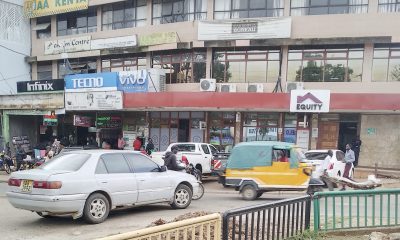
 Investigations3 days ago
Investigations3 days agoInside the Deadly CBD Chase That Left Two Suspects Down After Targeting Equity Bank Customer Amid Insider Leak Fears
-
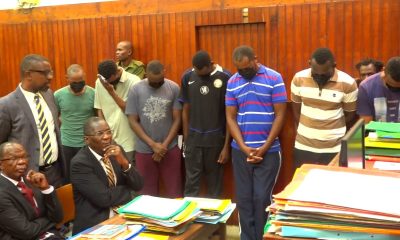
 News2 days ago
News2 days agoSeven KDF Soldiers Accused Of Stealing Meth From Sh192 Million Mombasa Bust Detained For 10 More Days

